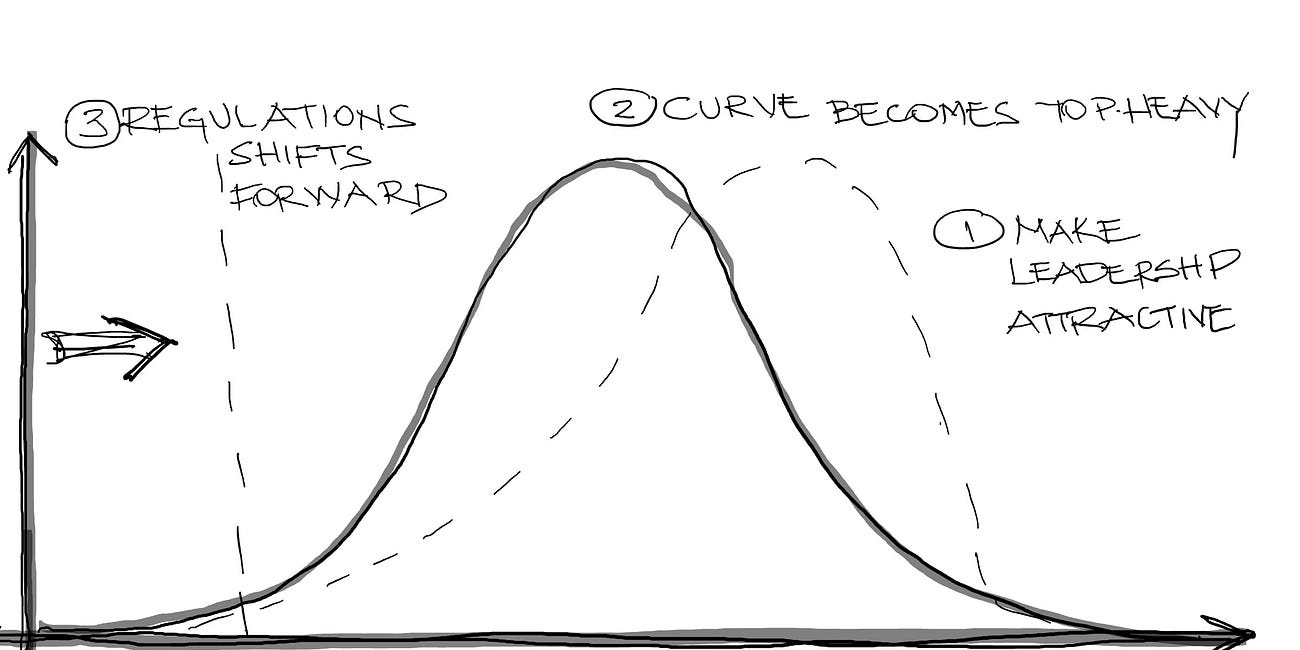Having just celebrated a year on Substack with this hyperlinked reflection, I have thought long and hard how to start another year. What cornerstone can guide more eye-opening exploration among this growing global community of changemakers? I’ve decided to honor the changemakers who’ve joined this Substack by answering the question: what does it take to build a movement that changes the world?
Want big, bold change? Build a movement.
If you want to make a meaningful difference in the world, you probably have an idea you hope can recast what is possible. What is acceptable. Until it represents the new normal.
You envision what we would call a movement.
You know more than you think you do
Have you ever felt like you belong in a community you didn’t know? Acted in its interests even when that demanded letting go of your own preferences for the broader benefit? If so, you’ve been part of a movement.
Have you ever gotten people behind a cause? Led a successful fundraiser? Facilitated a meet-up that got a life of its own? Then, you’ve started a movement!
If you subscribe to this Substack, you have probably been part of countless movements.
I dare say, movements have defined you as much as you have defined them.
However, almost no movements scale beyond their original community. When they try, they often collapse, even harming the group that began them. Why does this happen?
I’d argue that most movements “fail” because we don’t understand them for what they are OR see them through.
Image credit: Michelle Darné
What is a movement?
A movement is when many people act independently towards a shared goal.
A movement produces meaningful transformation without coercion.
For the purpose of this Substack and my work more broadly, we’re after transformational movements that change the world for the better.
Does all transformation demand a movement?
No.
A movement is not the only way to change the world. I care deeply about showing other paths forward, and I’m good at it. As a changemaker, you can rewire systems without building movements (see an earlier post.) However, if you love working with people — and/or if the change you seek is big, bold, and sweeping — it demands a movement. So, we might as well learn how to do it well.
What if I told you that you don't need to change minds to create powerful change?
If you are committed to changing the world, you have probably heard that it depends on your ability to win hearts and minds.
Building a successful movement is the holy grail of all change talk. We have had many successful movements, yet rarely does anybody who has “changed the world” claim that they designed — planned — intended — to do just so. Interviews with countless changemakers suggest that they were driven by intent, acting however seemed right at the time.
The truth is, most changemakers have been conditioned to think they can’t deliberately create large-scale change.
That is a set of assumptions — a wiring — that is more dangerous than anything I know. Historically, our impact as changemakers has been haphazard. Too often, changemakers create impact by accident, not by design. Our efforts can feel like self-destruction — throwing ourselves against the status quo without enough preparation. Is it any wonder that 70% of transformational efforts fail? See my earlier post on this statistic.
Given how much transformation we have collectively created in spite of this, what would become possible if we could become intentional — deliberate — about it?
Let me pause here because yes, this is a big deal.
Transformation has often been treated as a mystery, even by experienced changemakers. As something we cannot plan, let alone steer. I’ve long disagreed. And my defiance has paid off!
Why 70% of transformation initiatives fail
Wherever we look, we need urgent, wholesale transformational change towards a future where all can thrive in harmony with our planet. There are countless motivated people in positions of power with accurate problem definitions and promising solutions. So why does transformation remain stuck at an abysmal 70% failure rate?
Why listen to me?
A few of you might wonder if I’m really offering anything new. I am.
Since I first got hooked on change (see my origin story), I’ve helped launch and accelerate a dozen movements around the world: green building, healthy buildings, blockchain, health equity, transactional energy, anti-domestic violence, living building materials, etc.
My PhD research involved looking for patterns across three “buckets” of insight:
20+ years of my own experience creating transformation on 6 continents
interviews with seasoned changemakers like Maria Atkinson, Pooran Desai, Jason McLennan, Bill Reed, and Lakisha Woods.
Scholarly and practice literature.
My PhD research confirms that we can, indeed, orchestrate transformation. There are no guarantees, but we don’t expect those from any complex systems, whether in chemistry, parenting, or politics.
We can — finally — be intentional about transformation
In the coming weeks, I’ll draw on my PhD research tested against real-life experience.
This is one of many posts on this complex topic. If it were simple, we wouldn’t still be asking questions. One day, I plan to turn this series of posts into its own book. For now, you get the front-row seat as I work it out.
A successful movement follows distinct phases: vetting a solution, planning, implementation, and embedding & celebrating. Future posts will spell out what questions and actions each phase might mean for your particular movement. Before we get there, please reflect on the three variables and the three parallel forces that shape movements.
A movement is subject to 4 variables:
Timeframe. Some movements are time-bound. If you only have until such a date to sell enough product for a cause, there’s a deadline. Same with elections. Whatever movement you activate is fueled by and useful within its built-in expiry date.
Outcome. Some movements are outcome-bound. Rights to vote. Curing cancer. Halting climate change. Movements such as these might tie themselves to milestones, but results are the only thing that matters. A lay person often knows whether they’ve succeeded or not.
Targeted impact. While some movements target a contained issue, others aim to reimagine global systems of power, information, and material flows.
Number of disparate people required. Some movements can be accomplished by a single person or a small, committed band. Other, more complex movements demand the expertise and influence of people unlikely to even meet outside of such a movement.
My research suggests that every effective movement depends on 3 interlocking dynamics:
Catalytic. An effective movement is like a spark that catches dry tinder — it doesn’t just glow, it ignites. It awakens urgency, clarity, and conviction. It presents a vision of the future that feels both bold and within reach — something we must be part of. But this catalytic force goes further. It translates the movement’s deeper intent into terms people can grasp and act on. It bridges the radical and the practical, the emotional and the strategic, the outsider and the institution. In doing so, it creates a force strong enough to attract not just believers, but unlikely allies.
Nurturing. If catalyzing is the spark, nurturing is the hearth. An effective movement isn’t just fire—it’s the warmth that keeps us gathered, the glow that makes struggle bearable. It doesn’t just move us forward—it holds us together. It creates a sense of belonging so deep that, even in hardship, we feel we’re among the best company of our lives. At its strongest, this bond becomes an intimate emotional relationship—not just with people, but with the movement itself. We feel seen, supported, and sustained. Often, this is made real through genuine, life-altering relationships with like-minded others. These are not casual connections; they are the social fabric that helps us stay in the work even when it gets hard.
Recalibrating. A movement is not just a feeling — it’s a force. To last, it must forge change both outward and inward. Outwardly, it changes laws, norms, and markets. Inwardly, it refines vision against reality, tempers conviction with humility, adapts to conditions, and evolves rather than calcifies. We often resist this work because it is slow, technical, political—and humbling. It is also rarely glamorous. Yet this is how we measure movements when all is said and done. We are mobilized by energy and connection—but we remember whether it stuck the landing. It is in the forge that moments become movements, and movements become turning points.
I want to hear from you! In a comment, share the movement you’re working on, and why it matters. In upcoming posts, I may illustrate the best of science and experience on your movement!













